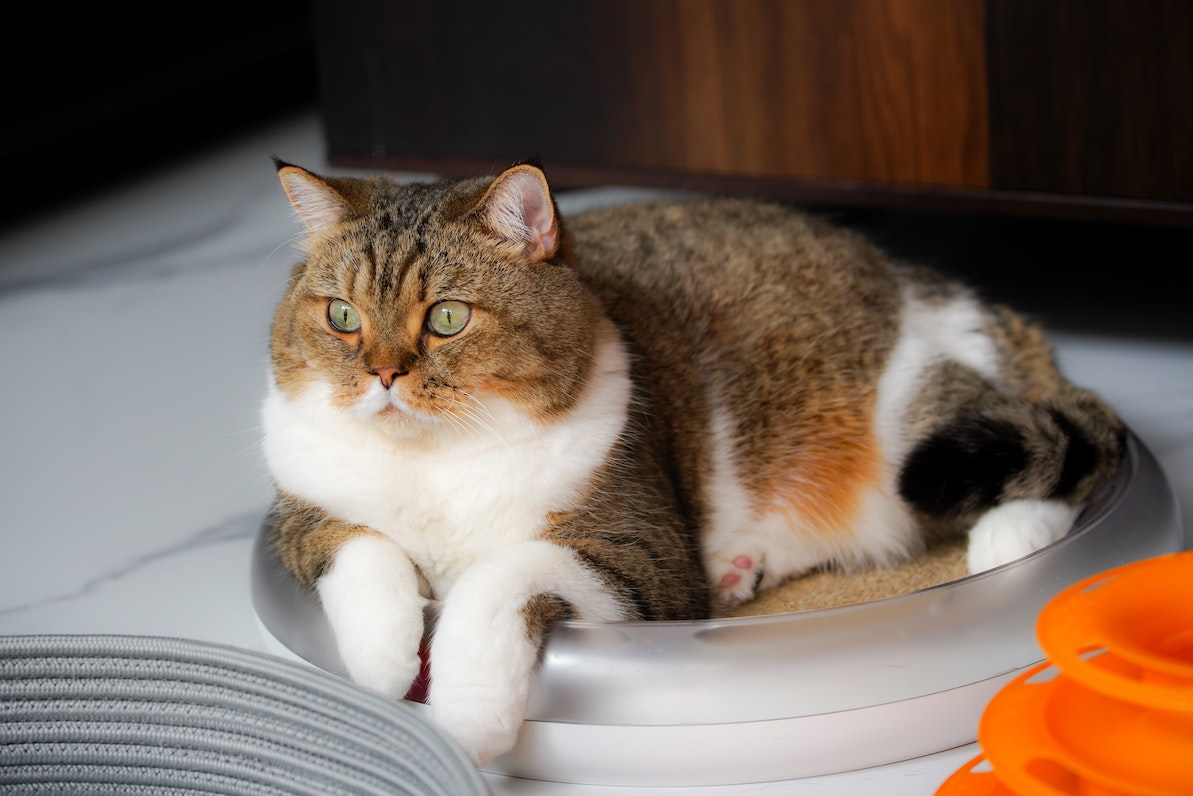To ensure that our cats are happy, we want to give them only the best of the best. Especially for first-time owners, the wide range of cat food and the general topic of nutrition can be a bit overwhelming at first. Therefore, with this article we are starting a series of blog posts on the topic of nutrition for cats. Here you can find out which food is most suitable for your cat's age group and what you should pay attention to when buying it. In this article we will give you a rough overview of the topic of cat food.
nutrient pyramid

Cat food contains mainly proteins and fats, from which cats get most of their energy. Cats are natural carnivores, eating only raw meat in their natural environment. Therefore, they also need a corresponding amount of animal protein and fats, which are usually contained in the feed in the form of animal offal. Other important nutrients include minerals that ensure healthy growth and strong bones. Dietary fiber is important as it aids in the cat's digestion. Vitamins support all important bodily functions, such as heart health, metabolism and a healthy immune system. They also ensure healthy skin and a shiny coat. In our next blog post on the cat food series, we will go into more detail about the individual nutrients and their role.
Different types of cat food
Cat food falls into two broad categories: dry food and wet food. In addition, there are also different foods that are tailored to the age and health of your cat.
3.1 Dry food

As the name suggests, dry food contains very little water. The food it contains is made into dry pellets and can be left in your cat's bowl throughout the day. Dry food has the advantage that it cleans your cat's teeth while eating and does not go bad quickly. Since your cat will not absorb any liquid from the dry food, you should always make sure that your cat's water bowl is full.
3.2 Wet food

Wet food contains a lot of water for your cat to consume during its meal, allowing it to meet its hydration needs fairly well. Cats like wet food because it is easier for them to digest and the relatively fresh, watery food most closely simulates their natural eating habits. However, you should be aware that wet food goes bad faster and should be disposed of better if left untouched for longer hours.
Puppy, junior or senior?
It doesn't matter whether it's wet or dry food - both groups can be divided into different categories, mostly determined by age or health problem. In this article, however, we will first focus on the different age groups, namely “Junior” (1-12 months), “Adult” (1-8 years) and “Senior” (from 8-10 years).
What does each age group value?
As your cat grows, her nutritional needs will change as well. For example, a cat over a year old needs more energy and protein that they can no longer get in their junior food. Older cats from 8-10 years, on the other hand, need food that they can digest more easily. Therefore, different categories have been created, which are based on general age information. Of course, each cat develops at its own pace and grows out of one of these food categories faster or slower. Here we have put together a small overview of each of the age groups:
Kitten and Junior (from 1-12 months of age)
Up to an age of about 4 weeks, kittens are still breastfed by their mother. But the older they get, the more energy and other nutrients are needed. In most cases, the cats are then given a mixture of mother's milk and easily digestible kitten food to make it easier to switch to adult food. From the age of about 6 months, the kitten food is exchanged for the junior food. Cats grow very quickly in their first year of life and therefore also need a variety of nutrients such as magnesium and protein to support healthy development.
Adult (from approx. 1 year)
When a cat is "adult" its food should be less nutritious to avoid obesity. The habituation to the “adult” food is now complete when replacing the junior food with the adult food. Now the cat gets all the necessary nutrients that it needs in this phase of life.
Senior (from the age of 8-10 years
Older cats usually have less urge to move than their younger counterparts. Due to their calmer lifestyle, they require less energy than when they were younger. In order to avoid obesity and to protect their digestive system, older cats are given specially formulated senior food. Senior food is easier to digest and has fewer calories.
What to pay attention to?

Although cat food is not usually structured too differently, there are of course deviations from brand to brand and from price range to price range. Different providers have different qualities. Depending on your cat's health, you may also want to pay attention to different needs. In this series of blog posts, we're going to tell you more about disease nutrition and the differences in quality cat food.
We hope that this article has already given you a small overview of the subject of nutrition for cats. In our next blog post in this series, we will explain everything to do with nutrients and their effects. Subscribe to our newsletter so you don't miss an article.



